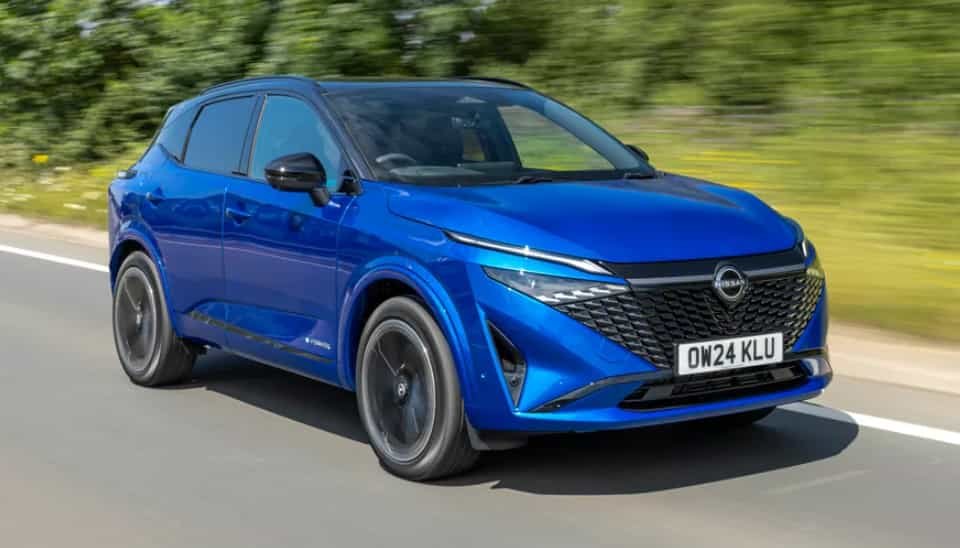You get in your Nissan Qashqai, turn the key—or press the start button—and… nothing. No roar of the engine, no comforting dashboard lights. Just silence. It’s frustrating, inconvenient, and sometimes downright stressful—especially if you’re late for work or stuck in an unfamiliar place.
If you’ve experienced this scenario, you’re not alone. Nissan Qashqai owners around the world have reported a variety of starting issues, from the simplest dead battery to more complex problems involving sensors or the vehicle’s immobilizer system. The tricky part? Many of these issues share similar symptoms, making it hard to tell what’s actually wrong without a proper guide.
In this article, we’ll walk you through the 7 most common reasons why your Qashqai won’t start—plus simple, actionable solutions for each. Whether you’re a seasoned DIYer or someone just trying to understand what your mechanic is talking about, this guide will give you the clarity (and confidence) you need to tackle the issue.
Let’s get your Qashqai back on the road.
1. Dead Battery
Imagine this: You’re running late, you rush to your Nissan Qashqai, hit the start button—and nothing happens. No dashboard lights, no engine noise, just silence. The most common and often most overlooked culprit? A drained or dead battery. It’s surprisingly easy to kill a car battery without realizing it—maybe you left the interior lights on overnight or haven’t driven for a few days during cold weather. Batteries degrade naturally over time too, usually lasting 3 to 5 years, and when they go, they tend to do it without much warning.
A quick jump-start might bring your Qashqai back to life, but if your battery keeps dying repeatedly—or your electronics act strangely—it could be more than just low voltage. In some cases, electrical issues like faulty fuses or power window glitches can create system-wide disruptions that mimic battery failure.
To rule out such hidden electrical gremlins, it’s worth checking out this related guide:
👉 Nissan Power Window Reset Not Working? Top 7 Fixes You Should Try – it covers fuse resets, relay checks, and ECU-related resets that can often tie back to broader startup issues.
If your Qashqai sits idle for long periods, especially in winter, consider a battery maintainer. It keeps the charge steady and prevents unexpected morning surprises. Sometimes, the simplest issues are the easiest to miss—and the easiest to fix.
2. The Starter Motor Might Be Letting You Down
Now picture this: you turn the key or press the button and hear a click—but nothing else. That single, annoying sound often points directly to a faulty starter motor. Unlike a dead battery, which gives you silence or dimmed lights, a failing starter still tries—unsuccessfully—to engage the engine. This is usually caused by worn-out components inside the motor or a malfunctioning solenoid. In some cases, corrosion on the wiring or connectors can be the root of the problem.
If the starter is dying, it might work intermittently—starting fine one day and failing the next. Repeated attempts can even overheat the unit, risking more damage. Mechanics typically test voltage at the motor to confirm a diagnosis. If power’s there but the motor won’t spin, it’s time for a replacement.
Though starter motors aren’t cheap, replacing one restores reliability and eliminates the stress of a hit-or-miss ignition. Just keep in mind that in many Qashqai models, the starter is located in a tight spot behind the engine—definitely not a job for a beginner DIYer. Sometimes, knowing when not to try it yourself is part of the fix.
3. A Faulty Ignition Switch Can Stop Everything Cold
Sometimes, it’s not the battery or the starter—it’s the part that connects them both: the ignition switch. When this seemingly simple component fails, your Qashqai may not show any signs of life at all. No dashboard lights. No sound. Nothing. It’s easy to misdiagnose as a dead battery, but the difference lies in the randomness—sometimes it works, sometimes it doesn’t, especially on cold mornings or after a bumpy drive.
The ignition switch is the gateway to all your vehicle’s systems. Over time, its internal contacts can wear down or corrode, breaking the electrical connection needed to activate your starter motor and fuel pump. If your key feels loose in the ignition or the start button doesn’t always respond, that’s a major clue.
Diagnosing this issue usually requires testing power delivery to critical circuits—work best left to a qualified technician. But the good news? Once confirmed, replacing the ignition switch isn’t terribly expensive, and it often brings immediate results. For drivers who rely on their Qashqai daily, it’s a repair worth doing sooner rather than later—because when your switch gives out completely, you’re going nowhere fast.
4. Fuel Pump Failure Leaves Your Engine Starved
Your engine needs three things to start: air, spark, and fuel. When the fuel pump fails, that last element disappears—and so does your Qashqai’s ability to get moving. One of the most frustrating aspects of a failing fuel pump is that the engine may still crank normally, making it seem like everything’s working… until it doesn’t fire up.
Some early warning signs include longer-than-usual cranks, sputtering at start, or complete failure after refueling. On many Qashqai models, you can listen for a faint whirring sound near the fuel tank when you turn the key to the “ON” position. No sound? That may mean your pump isn’t priming.
Failures can result from clogged filters, electrical shorts, or simple wear over time—especially in high-mileage vehicles. Sometimes it’s a fuse or relay, which are cheap fixes. Other times, the entire pump module needs replacing—a more labor-intensive and expensive job.
The key to saving time and money? Don’t ignore early symptoms. Addressing pump issues early prevents full breakdowns and keeps your engine from running lean, which can cause even more damage down the road.
5. Crankshaft Position Sensor Failure Can Leave You Guessing
One of the trickier, more elusive culprits behind a non-starting Qashqai is the crankshaft position sensor. This small but critical component tells your engine control unit (ECU) the exact position and speed of the crankshaft, which is vital for timing fuel injection and ignition. When it fails, the engine has no idea when to fire—and as a result, it won’t start at all.
What makes this issue so deceptive is that everything else might seem fine. The engine cranks, the battery is strong, the fuel pump is working—but the engine just won’t fire up. In some cases, your Qashqai might have struggled to start intermittently beforehand or suddenly cut off while driving, then refuse to restart. If your Check Engine Light is on, a quick OBD2 scan can reveal fault codes like P0335 or P0336, pointing directly to the crank sensor.
Replacement is typically straightforward and not too expensive, but access varies depending on your engine model. It’s a small fix with a big impact—once replaced, your Qashqai usually starts right up, like nothing ever happened.
So next time your engine cranks endlessly without firing, don’t just blame the fuel—consider the silent signals it’s not receiving.
6. Immobilizer or Key Fob Malfunctions Can Keep You Locked Out
Today’s modern cars are smarter—and more secure—than ever. But with that security comes complexity. If your Nissan Qashqai refuses to start and you notice a blinking key symbol on the dashboard, chances are your immobilizer system or key fob is the problem.
The immobilizer is designed to prevent theft by verifying a chip inside your key or key fob before allowing the engine to start. If the system can’t read the chip—due to a dead key fob battery, damaged transponder, or interference from nearby electronics—it will block ignition entirely. This often presents with symptoms like: the car powers up, but the engine won’t crank; or cranks for a second and immediately shuts off.
Before panicking, try using a spare key if you have one. Sometimes, simply replacing the button-cell battery in your fob solves the issue. In other cases, you may need to re-sync the key or perform an immobilizer reset—a process that varies by model year.
What’s frustrating is that these issues often strike without warning, and towing to a dealer may be required for reprogramming. But knowing the signs early can save you the trouble—and a few hundred dollars. When your car’s security system works against you, it’s not theft you’re worried about—it’s getting to work on time.
7. Blown Fuse or Electrical Failure Can Shut It All Down
Sometimes, the root of your Qashqai’s starting problems isn’t a big-ticket item like the fuel pump or starter—it’s something as deceptively simple as a blown fuse. One tiny fuse can interrupt power to critical systems like the ignition, fuel delivery, or even the ECU, leaving you with a car that won’t respond at all.
Electrical issues like these often mimic other symptoms: no crank, no fuel pump sound, or accessories working while the engine remains silent. The difference? These failures can occur instantly—one moment your car starts fine, and the next, it’s completely lifeless.
The most common causes of blown fuses include power surges, short circuits from corroded wires, or faulty aftermarket accessories drawing too much current. If you’ve recently installed a dashcam, phone charger, or stereo upgrade, it might be worth disconnecting them as a test.
The good news? Replacing a fuse is cheap—often less than a dollar—and takes just a few minutes if you know which one to look for. Your owner’s manual will have a fuse diagram, and some Qashqai models even have spares in the fuse box itself.
Just be sure to replace fuses with the exact same amperage rating—never higher—as this protects your wiring from further damage. And if a fuse keeps blowing, that’s a red flag pointing to a deeper problem that needs professional inspection.
Conclusion – Getting Your Qashqai Back on the Road
When your Nissan Qashqai refuses to start, it’s more than just an inconvenience—it’s a disruption to your day, your plans, your peace of mind. The good news is that most starting issues, from dead batteries to failing sensors, are diagnosable and fixable—often without breaking the bank.
Across these seven common causes, there’s a clear theme: today’s vehicles rely on the delicate balance of electronics, sensors, and mechanical components. Ignoring the early warning signs—like sluggish starts, random stalls, or blinking dashboard icons—can turn small problems into big repair bills.
Whether you’re a weekend DIYer or someone who just wants to understand what the mechanic’s talking about, knowing these symptoms gives you the upper hand. And sometimes, being informed is all it takes to prevent getting stranded.
Has your Qashqai ever let you down at the worst moment?
Which of these issues have you faced—and how did you fix it? Share your experience in the comments!
For more detailed repair guides, cost breakdowns, and maintenance tips tailored for Nissan drivers, follow our newsletter or bookmark this page. Your next drive should never start with doubt.

